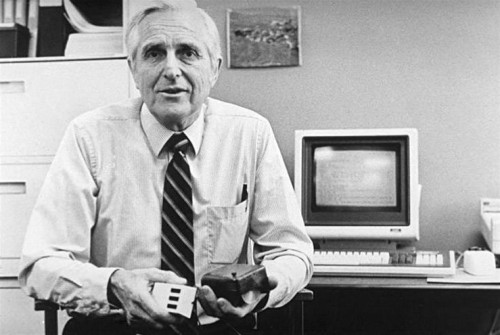Douglas Engelbart
|
Douglas Engelbart Douglas Engelbart was born on January 30, 1925 in Oregon, USA.
He is most well known as the inventor of the computer mouse.
At SRI International, Engelbart was the primary force behind the design and development of the On-Line System, or NLS. He and his team at the Augmentation Research Center (ARC, the lab he founded at SRI) developed computer-interface elements such as bit-mapped screens, groupware, hypertext and precursors to the graphical user interface. He conceived and developed many of his user interface ideas back in the mid-1960s, long before the personal computer revolution, at a time when most individuals were kept away from computers, and could only use computers through intermediaries (see batch processing), and when software tended to be written for vertical applications in proprietary systems. In 1967, Engelbart applied for, and in 1970 he received a patent for the wooden shell with two metal wheels (computer mouse U.S. Patent 3,541,541 ), describing it in the patent application as an "X-Y position indicator for a display system". Engelbart later revealed that it was nicknamed the "mouse" because the tail came out the end. His group also called the on-screen cursor a "bug," but this term was not widely adopted. He never received any royalties for his mouse invention, partly because his patent expired in 1987, before the personal computer revolution made the mouse an indispensable input device, and also because subsequent mice used different mechanisms that did not infringe upon the original patent. During an interview, he says "SRI patented the mouse, but they really had no idea of its value. Some years later it was learned that they had licensed it to Apple for something like $40,000." Engelbart showcased many of his and ARC's inventions in 1968 at the so-called mother of all demos. Articles
Historical Timeline for Douglas Engelbart :
|
|










